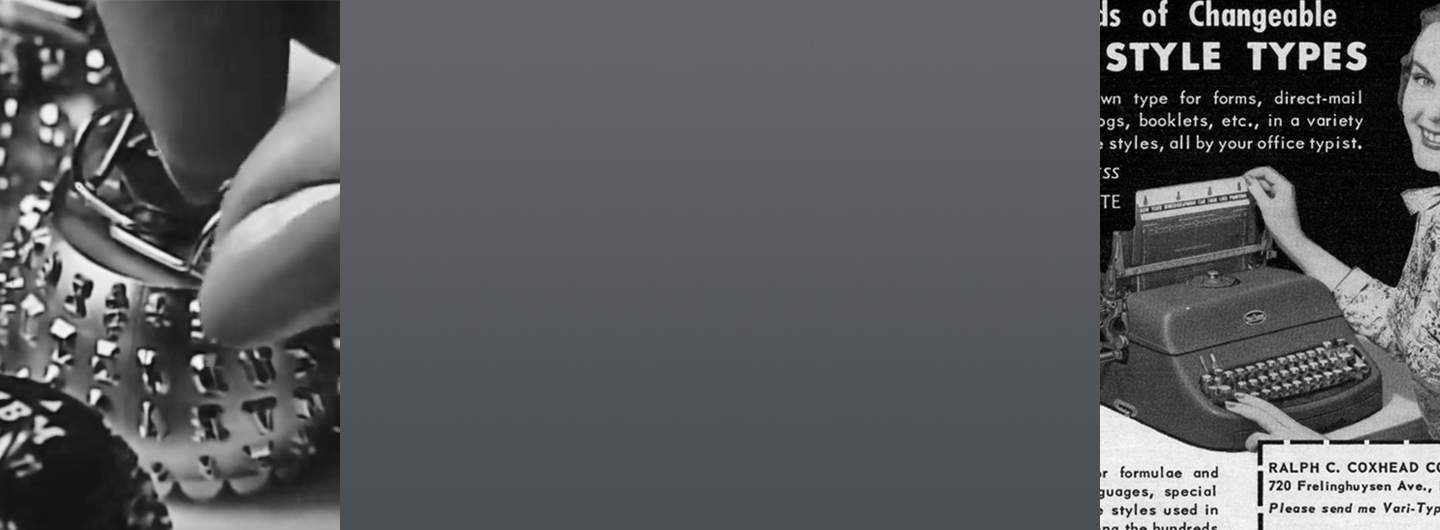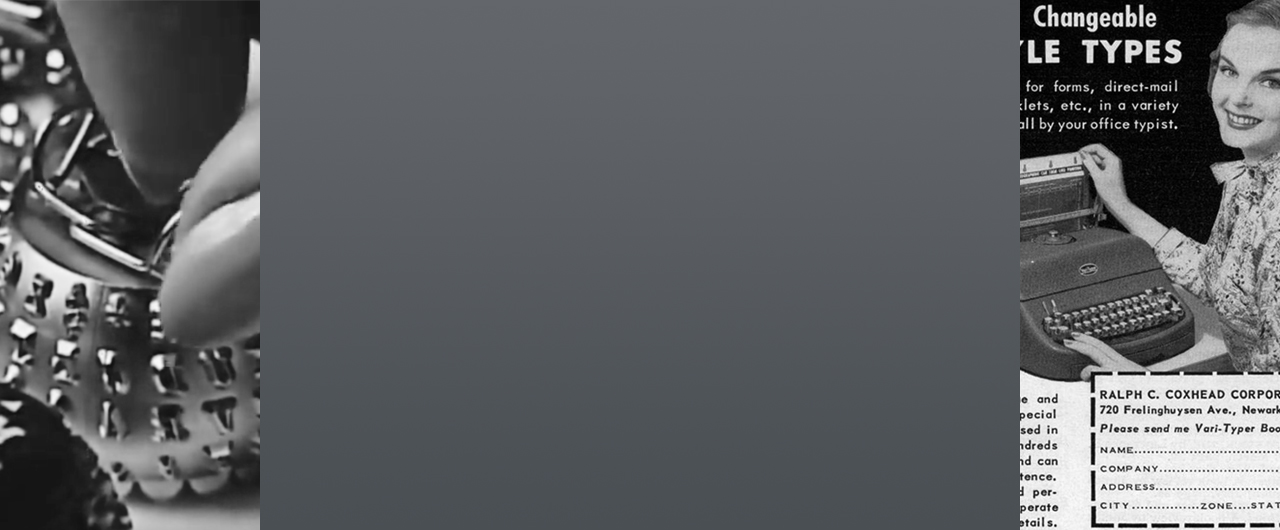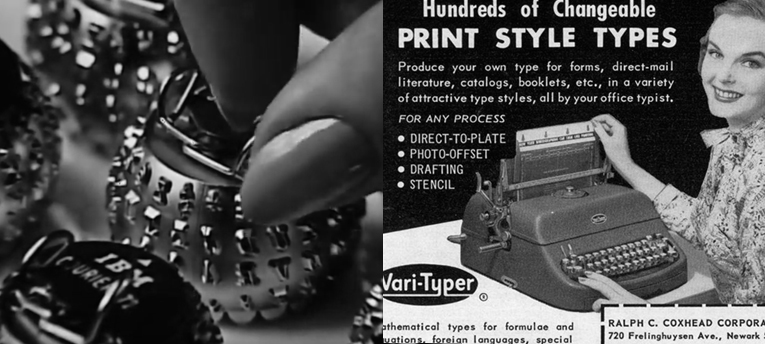





Relief is an artistic technique in which the subject extrudes from a flat surface. Printing blocks and plates often use relief to define type, illustrations and photographs. Fonts for typewriters are stored in the same way. Negative relief, or intaglio, where the the subject is encised or etched into the surface, is also used for printing.


In relief printing, the graphics to be printed are held by raised surfaces from which the rest of the surface has been removed by etching or carving. Ink is applied to the raised surfaces and the block is pressed against paper, cloth or some other substrate. Printing with designs carved in wooden blocks originated in China in the 3rd century. Movable type was also invented in China in the 11th century. But it wasn't until Guttenburg developed the printing press c. 1450 that a machine entered into the process. He adapted an existing technology: the screw mechanism in wine and paper presses. Individual pieces of type cast in metal could be assembled, placed in the press, inked, then pressed against paper to produce readable text. Different fonts and typefaces were represented by collections of metal type, each of which stored the shape of a character in relief. Over time, numerous variations of the process appeared, including offset printing, typewriters and computer printers. Graphics could be represented in a similar manner and used in the same press. Eventually, photographs were printed using half-tone and other techniques.
Negative relief, or intaglio, could also be used to store text and graphics. In intaglio, the design to be printed is cut or etched into a metal plate. The plate is coated with ink. The plate is wiped off, leaving ink in the incisions. Pressing paper against the plate transfers the ink and prints the design.
Gutenberg did not invent movable type. It was invented by the Chinese in the early 11th century with wooden and ceramic characters arranged in a frame. In 1250 AD, the Korean Choe Yun-ui invented a process for creating metal type. It's possible that the technology eventually made its way to Europe with the Mongol invaders, but there is no evidence that Gutenberg was aware of this earlier work. What Gutenberg did invent was the printing press. He also invented a repeatable and efficient process for creating metal type from matrices (molds) produced using punches.
Line casting is sometimes called hot metal typesetting (as opposed to "cold type" for phototypesetting) because the type is created from molten lead. In line casting, a complete line of text is cast on the fly to form a slug. Slugs are dropped into a galley to form a column of text. The galleys are then assembled in a frame or forme to create a page. The forme is pressed against the flong, a paper mache-like material that retains the shape of the type. The flong is then used as a mold to create a plate or stereotype. For high volume printing on a rotary press, the flong is placed in a cylindrical casting device to produce a curved plate.
Business depends on exchanging text. Before the late 19th century, that meant pen and paper. Printing with movable type was a painstaking process that made sense only when many copies were desired—not typically the case for business correspondance. The first commercially successful typewriter, the Remington 2, appeared in 1878. Over the next 40 years, inventors produced a variety of different solutions, until the basic design of the modern typewriter was arrived at in the 1920s. A typewriter was easier to use than a printing press, but it still required some skill to operate efficiently. That need was largely filled by women, who were beginning to enter the workforce in larger numbers.
Standard typewriters provided only a single font. Printers and typewriters with interchangeable type elements allowed the use of multiple fonts.


Images stored in relief on transparent or reflective substrates can be projected or otherwise viewed due to refraction or diffraction. Even though the two slides below are uniformly transparent, the path of light is modified through refraction by the variable orientation of the surface. As a result certain areas will appear lighter or darker than others. In the case of the hologram on a vinyl record, tiny points etched into the surface record diffract incident light to create a floating 3D image.


Marks embossed on a deformable surface are semi-permanent and have been used to store information occasionally. Edison's first phonograph embossed an analog of sound waves on tinfoil, although extracting that information destroyed the recording after only a few plays. The dots and dashes of Morse code have also been stored as embossed marks—in fact, Edison was working on a recorder for Morse code that used embossing, which became one of the inspirations for the phonograph. Early flight data recorders stored data as instrument traces embossed on durable metal foil that could survive high temperatures and mechanical stress.